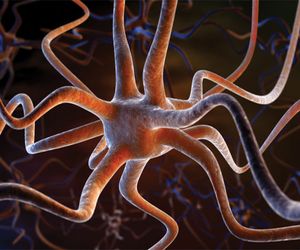Neurobiology Research
Neurobiology is the foundation of multiple fields of research, from developmental biology to neurological pathology. The cells of the nervous system and their organisation into functional pathways, serve to process information and regulate behaviour.
We are pleased to offer a range of antibodies, probes, assay kits and reagents to help support research in this field.
Microglia

Microglia are the resident macrophages of the brain and act as the main form of active immune defence scavenging damaged neurons, debris and pathogens. Whilst microglia offer a protective function they can also have deleterious effects as a result of cytotoxic secretion of hydrogen peroxide, nitric oxide, proteases and cytokines.
Microglial cells are the only brain cells to express Iba-1 (ionised calcium binding adapter molecule 1). Calcium ions are important signal mediators and exert their signalling activity through association with various calcium binding proteins. Iba-1 is a 17kDa protein from the large EF hand family of proteins which contain the EF-hand motif. Iba-1 expression is up-regulated in activated microglia enabling differentiation between cells engaged in routine surveillance and those which are activated in response to injury.
For this reason Iba-1, also known as Allograft Inflammatory factor 1 (AIF-1) is often used in immunohistochemistry as a marker for microglia. Enhanced Iba-1 expression has been observed in traumatic brain injury, ischemia and inflammation.
The Wako Anti-Iba-1 antibodies for immunocytochemistry and Western Blotting have been raised against a synthetic peptide corresponding to the carboxyl-terminus of Iba-1, which is conserved amongst human, rat and mouse Iba-1 protein sequences.
These antibodies are specific to microglia and macrophages and do not cross react with neurons or astrocytes.
Glutamate Receptors

The neurotransmitter glutamate may also play a role in neurodegenerative disease. Activated microglia release glutamate which can induce excitotoxic neuronal death.
N-methyl-D-aspartate (NDMA) receptor signalling increases calcium ion influx and Ca2+/calmodulin-dependant kinase activation (CaMK), in turn activating neuronal nitric oxide synthase (nNOS) which increases nitric oxide production.
High concentrations of NO exert neurotoxic effects; shutting down the mitochondrial respiratory chain, impairing dendritic and axonal transport and eventually leading to cell death. Glutamate receptor blockade may offer a potential therapeutic approach to neurodegenerative disease.
The Wako range includes NDMA Antagonists such as Aspartic Acid and Felbamate plus the NDMA Agonists 2,3-Pyridinedicarboxylic Acid and D-Serine.
Gap Junction Blockers
Gap junctions, adjacent hemichannels that directly connect the cytoplasmic compartments of adjacent cells, allow free passage of ions and small molecules between cells. Such gap junctions are important in excessive glutamate release and blockade of these hemichannels by glycyrrhetinic acid derivatives may prevent microglia/macrophage-mediated neuronal death.
Glycyrrhetinic acid and its derivatives offer poor penetration of the bloodbrain barrier (BBB) but INI-0602 is a novel BBB permeable gap junction hemichannel blocker shown to inhibit glutamate mediated toxicity.

Alzheimer’s Disease
The ageing society brings an increase in research into age associated diseases such as dementia,
Read More
Parkinson's Disease
Parkinson’s disease (PD) is a neurodegenerative disorder characterised by cell loss within the substantia nigra and symptoms of bradykinesia, rigidity and tremor.
Read More